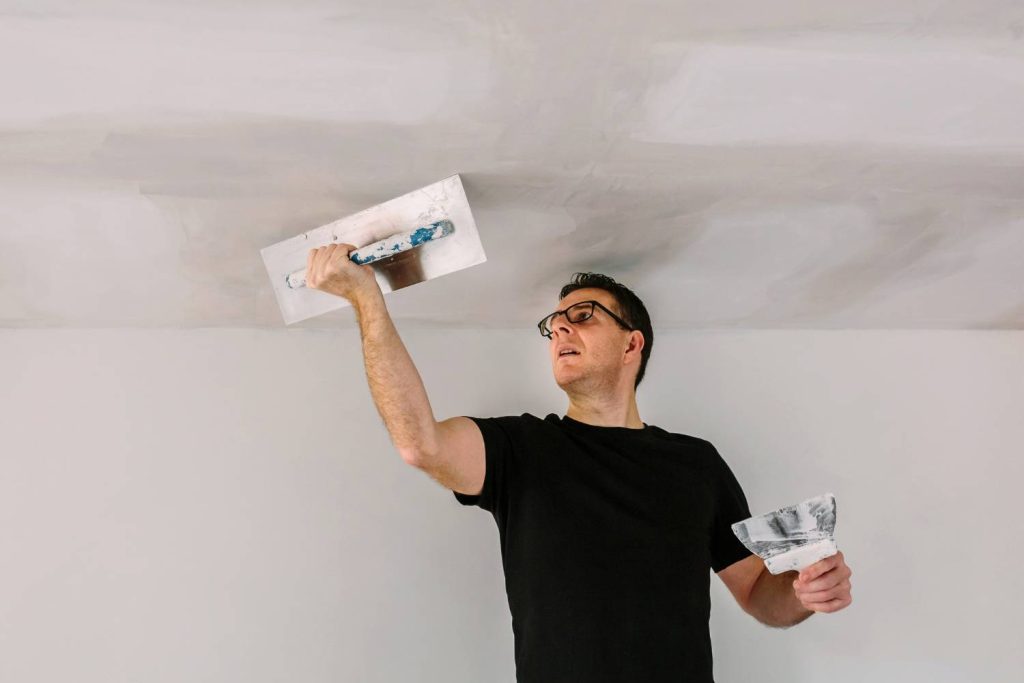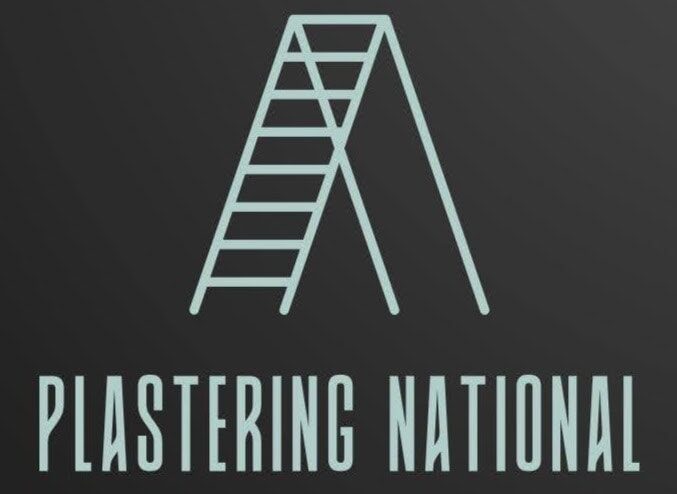Plastering a ceiling has long been considered a classic method for achieving a smooth and refined finish in homes and commercial spaces. The question arises: Is it necessary to plaster a ceiling, or can you opt for other materials that are just as effective? In this guide, we will explore the benefits of plastering a ceiling, weigh the plastering a ceiling pros and cons, and discuss the key factors to consider before embarking on this project. We will also cover ceiling plastering options and the essential steps in how to plaster a ceiling, helping you make an informed decision.
Let’s Get Straight To The Point
Plastering a ceiling offers several benefits, including a smooth finish, enhanced durability, fire resistance, and improved thermal and sound insulation. It is important for aesthetic appeal, protection against moisture, and creating a base for decoration. However, plastering can be costly, time-consuming, and messy. It also requires proper preparation and can be heavy, which may need additional ceiling support. Alternatives like drywall, wooden panels, or PVC tiles offer quicker, cost-effective solutions. When deciding whether to plaster a ceiling, consider factors like cost, time, and the ceiling’s condition. For the best results, consider professional plastering, or carefully follow DIY plastering techniques if opting for a more budget-friendly approach.
Why Plaster Ceilings Are Important
Plastering a ceiling is more than just a design choice—it offers several functional and aesthetic advantages. From providing a smooth, elegant finish to enhancing your ceiling’s durability, plastering plays a vital role in creating the perfect ceiling. Here are some reasons why plaster ceilings are important:
1. Enhancing Aesthetic Appeal
Plaster offers a smooth, flawless finish that conceals imperfections, cracks, or uneven surfaces. This allows for a clean, polished look, giving you a versatile surface for painting or applying decorative finishes. Whether you choose textured plaster or a simple smooth surface, plastering a ceiling elevates the overall aesthetic of any room. Without plaster, your ceiling might appear rough or unfinished, limiting your design options.
2. Providing Protection
Plaster acts as a protective barrier, preventing moisture from seeping into the underlying structure. This is particularly crucial in high-moisture areas like bathrooms or kitchens, where water damage can lead to mold and mildew growth. Plastering for fire resistance is another key benefit, as plaster can slow the spread of flames, providing valuable time to evacuate in case of fire.
3. Thermal Insulation with Plaster
Thermal insulation with plaster is an important feature, especially when considering energy efficiency. Plaster helps reduce heat loss in winter and prevents excessive heat from entering during the summer, leading to more comfortable temperatures and lower energy bills. This additional insulation is an attractive benefit for homeowners looking to create an energy-efficient home.
4. Soundproofing with Plaster Ceilings
Another advantage of plastering is its ability to improve soundproofing. Soundproofing with plaster ceilings helps to reduce noise transmission between rooms, making your home a quieter and more comfortable living space. This can be particularly important in noisy environments or for homeowners seeking better acoustics.

Plastering a Ceiling Pros and Cons
When deciding whether to plaster your ceiling, it’s essential to weigh the plastering a ceiling pros and cons. While plaster offers numerous benefits, it also has some drawbacks to consider. Here’s a breakdown of the key advantages and disadvantages:
Pros of Plastering a Ceiling
- Aesthetic Appeal: Plastering gives your ceiling a smooth, elegant finish that can be painted or decorated to suit any design style.
- Durability: Once set, plaster is durable and resistant to scratches, dents, and cracks.
- Fire Resistance: Plaster, especially gypsum plaster, has fire-resistant properties, providing extra safety.
- Thermal Insulation: Plaster can help regulate temperature, making rooms warmer in winter and cooler in summer.
- Sound Insulation: It reduces noise transmission between rooms, creating a quieter environment.
Cons of Plastering a Ceiling
- Cost of Plastering a Ceiling: Plastering tends to be more expensive than alternatives like drywall. The cost includes materials, labour, and time.
- Time-Consuming: The process of applying plaster and allowing it to dry can take longer than other ceiling finishes.
- Heavy Material: Plaster is heavier than other materials, which may require additional structural support, particularly in older buildings.
- Repair Difficulty: If the plaster gets damaged, repairing it can be challenging and may require a professional.
- Messy Process: Plastering is messy, and significant clean-up is often required.
Choosing Plaster for Ceilings
When it comes to choosing plaster for ceilings, several factors need to be considered, including the intended use of the space, the moisture level, and your budget. Here are the main types of plaster commonly used for ceilings:
1. Gypsum Plaster
Gypsum plaster is a popular choice for ceiling applications due to its smooth finish, fast-drying properties, and fire resistance. It is ideal for most residential interiors, offering both aesthetic appeal and functionality.
2. Cement Plaster
Cement plaster is better suited for high-moisture areas like kitchens and bathrooms. It offers increased durability and moisture resistance compared to gypsum plaster, making it perfect for spaces where humidity levels are higher.
3. Lime Plaster
Lime plaster is a more traditional option and is known for its breathability. It is often used in older buildings that require restoration due to its compatibility with older materials.

How to Plaster a Ceiling
If you’re considering DIY plastering a ceiling, it’s important to understand the steps involved to achieve the best result. Here’s a quick guide to how to plaster a ceiling:
1. Prepare the Surface
Before starting the plastering process, ensure the ceiling is clean and free of dust and debris. If the ceiling is painted, apply a bonding agent to help the plaster adhere.
2. Mix the Plaster
Follow the manufacturer’s instructions to mix the plaster. The consistency should be smooth, not too thick or runny.
3. Apply the Plaster
Using a plastering trowel, apply the plaster in thin, even coats. Begin at one corner of the ceiling and work your way across, smoothing the plaster as you go.
4. Allow to Dry
Allow the plaster to dry completely before sanding or applying additional layers. Be patient—rushing the drying process can lead to cracks or peeling.
5. Finish the Surface
Once dry, sand the surface to achieve a smooth finish. You can then apply paint or other finishes to complete the look.
How Long Does a Plastered Ceiling Last?
The lifespan of a plastered ceiling depends on several factors, including the quality of the materials used and the environment. In general, how long does a plastered ceiling last can vary from 20 to 50 years if properly maintained. Regular inspection and prompt repairs can help prolong the life of your plastered ceiling.
Plaster Ceiling Maintenance
Maintaining a plastered ceiling involves regular cleaning and addressing any cracks or damage as soon as they occur. Plaster ceiling maintenance also includes repainting or reapplying finishes to ensure the ceiling remains aesthetically appealing and functional.
Professional Ceiling Plastering vs DIY
Deciding between professional ceiling plastering and doing it yourself depends on your skill level and the scope of the project. Professional plasterers can achieve a high-quality finish, especially in complex or large areas, while DIY plastering a ceiling can save on labour costs but requires time, skill, and patience.
Conclusion
Deciding is it necessary to plaster a ceiling comes down to your personal preferences, budget, and the specific needs of your space. Plastering a ceiling offers numerous benefits, including aesthetic appeal, durability, fire resistance, and improved insulation. However, it comes with higher costs and a longer installation time compared to alternatives like drywall. By understanding the ceiling plastering options, types of plaster for ceilings, and plastering techniques for ceilings, you can make an informed decision that suits your home or commercial space.
Whether you opt for DIY plastering a ceiling or hire a professional, ensure that you consider all factors, including maintenance and the long-term benefits of plaster, before embarking on your project.
Frequently Asked Questions
What Are The Main Benefits Of Plastering A Ceiling?
Plastering a ceiling offers several benefits, including enhanced aesthetic appeal, improved structural durability, and better insulation properties. A well-plastered ceiling can provide a smooth, uniform appearance that paint alone might not achieve. Additionally, plaster can help protect the ceiling from moisture, reduce noise transmission, and improve fire resistance, contributing to a safer and more comfortable living environment.
Can I Leave My Ceiling Unplastered?
Yes, leaving a ceiling unplastered is possible, and this choice depends on the space’s specific aesthetic and functional goal. Exposed ceilings are popular in industrial or rustic design schemes, where the visibility of beams, ductwork, and piping adds to the overall aesthetic. However, consider potential downsides, such as reduced insulation and soundproofing capabilities, before deciding.
Is Plastering A Ceiling Expensive?
The cost of plastering a ceiling can vary widely based on factors such as the size of the ceiling, the complexity of the job, and regional labour costs. While plastering can be an investment, it’s important to weigh this against the long-term benefits, including durability and aesthetic appeal. For a more accurate cost assessment, consult with local professionals for quotes.
How Do I Know If My Ceiling Needs To Be Replastered?
Signs that your ceiling may need to be replastered include visible cracks, sagging, or damage to the existing plaster. If the ceiling appears uneven or there’s evidence of moisture damage, replastering can help restore its appearance and structural integrity. A professional assessment can guide whether repairs or full replastering is necessary.
Are There Alternatives To Traditional Plaster For Ceilings?
Several alternatives to traditional plaster include drywall (gypsum board), decorative ceiling tiles, and wood panelling. Each option offers distinct aesthetic and functional benefits. For example, drywall installation tends to be quicker and less messy than traditional plastering, while decorative tiles can add unique design elements without extensive plasterwork.

